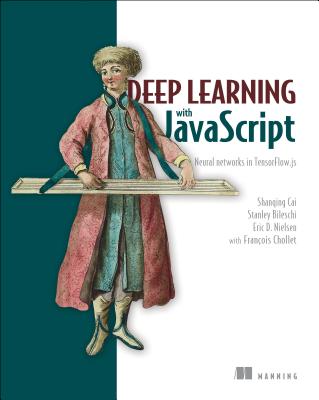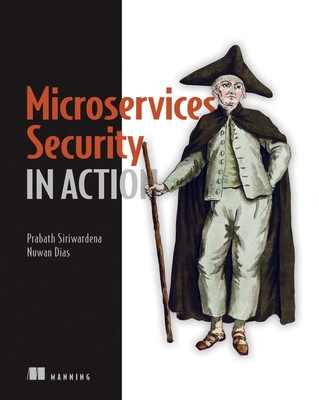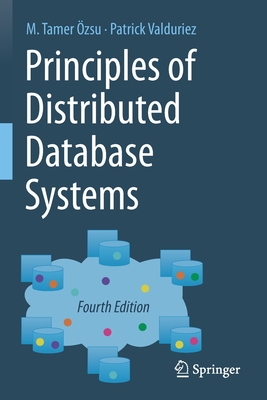Critical Code Studies
暫譯: 關鍵程式碼研究
Marino, Mark C.
- 出版商: Summit Valley Press
- 出版日期: 2020-03-10
- 售價: $1,340
- 貴賓價: 9.5 折 $1,273
- 語言: 英文
- 頁數: 288
- 裝訂: Hardcover - also called cloth, retail trade, or trade
- ISBN: 0262043653
- ISBN-13: 9780262043656
-
相關分類:
Computer-Science
立即出貨 (庫存=1)
買這商品的人也買了...
-
 Arduino 官方正版 Genuino 101
Arduino 官方正版 Genuino 101$1,700$1,700 -
 Raspberry Pi 3 Model B+ (UK製)
Raspberry Pi 3 Model B+ (UK製)$4,620$4,389 -
 JVM Performance Engineering: Inside OpenJDK and the HotSpot Java Virtual Machine (Paperback)
JVM Performance Engineering: Inside OpenJDK and the HotSpot Java Virtual Machine (Paperback)$1,980$1,881 -
 晉昇軟體最高殿堂:Jenkins2 持續整合大師之路
晉昇軟體最高殿堂:Jenkins2 持續整合大師之路$600$474 -
 $1,320Deep Learning with JavaScript: Neural Networks in Tensorflow.Js
$1,320Deep Learning with JavaScript: Neural Networks in Tensorflow.Js -
 JavaScript 技術手冊
JavaScript 技術手冊$560$420 -
 Building a Future-Proof Cloud Infrastructure: A Unified Architecture for Network, Security and Storage Services (Paperback)
Building a Future-Proof Cloud Infrastructure: A Unified Architecture for Network, Security and Storage Services (Paperback)$1,998$1,898 -
 $1,584Microservices Security in Action
$1,584Microservices Security in Action -
 Principles of Distributed Database Systems, 4/e (Paperback)
Principles of Distributed Database Systems, 4/e (Paperback)$2,790$2,651 -
 $2,160Parallel and High Performance Computing (Paperback)
$2,160Parallel and High Performance Computing (Paperback) -
 $2,070Multithreaded JavaScript: Concurrency Beyond the Event Loop
$2,070Multithreaded JavaScript: Concurrency Beyond the Event Loop -
 Structure and Interpretation of Computer Programs: JavaScript Edition (Paperback)
Structure and Interpretation of Computer Programs: JavaScript Edition (Paperback)$2,680$2,546 -
 Understanding Distributed Systems : What every developer should know about large distributed applications, 2/e (Paperback)
Understanding Distributed Systems : What every developer should know about large distributed applications, 2/e (Paperback)$1,650$1,568 -
 建構機器學習管道|運用 TensorFlow 實現模型生命週期自動化 (Building Machine Learning Pipelines: Automating Model Life Cycles with Tensorflow)
建構機器學習管道|運用 TensorFlow 實現模型生命週期自動化 (Building Machine Learning Pipelines: Automating Model Life Cycles with Tensorflow)$580$458 -
 $2,052Mastering API Architecture: Design, Operate, and Evolve Api-Based Systems (Paperback)
$2,052Mastering API Architecture: Design, Operate, and Evolve Api-Based Systems (Paperback) -
 $2,233Functional and Concurrent Programming: Core Concepts and Features
$2,233Functional and Concurrent Programming: Core Concepts and Features -
 $1,767Functional Design: Principles, Patterns, and Practices (Paperback)
$1,767Functional Design: Principles, Patterns, and Practices (Paperback) -
 OpenTelemetry 入門指南:建立全面可觀測性架構(iThome鐵人賽系列書)【軟精裝】
OpenTelemetry 入門指南:建立全面可觀測性架構(iThome鐵人賽系列書)【軟精裝】$750$585 -
 Learning Systems Thinking: Essential Nonlinear Skills and Practices for Software Professionals (Paperback)
Learning Systems Thinking: Essential Nonlinear Skills and Practices for Software Professionals (Paperback)$1,995$1,890 -
 Collaborative Software Design: How to Facilitate Domain Modeling Decisions
Collaborative Software Design: How to Facilitate Domain Modeling Decisions$1,750$1,663 -
 內行人才知道的機器學習系統設計面試指南 (Machine Learning System Design Interview)
內行人才知道的機器學習系統設計面試指南 (Machine Learning System Design Interview)$680$537 -
 Mastering Opentelemetry and Observability: Enhancing Application and Infrastructure Performance and Avoiding Outages
Mastering Opentelemetry and Observability: Enhancing Application and Infrastructure Performance and Avoiding Outages$2,100$1,995 -
 Full Stack JavaScript Strategies: The Hidden Parts Every Mid-Level Developer Needs to Know (Paperback)
Full Stack JavaScript Strategies: The Hidden Parts Every Mid-Level Developer Needs to Know (Paperback)$2,062$1,953 -
 $2,160Beyond Vibe Coding: From Coder to Ai-Era Developer (Paperback)
$2,160Beyond Vibe Coding: From Coder to Ai-Era Developer (Paperback) -
 Building Event-Driven Microservices: Leveraging Organizational Data at Scale
Building Event-Driven Microservices: Leveraging Organizational Data at Scale$2,450$2,328
相關主題
商品描述
An argument that we must read code for more than what it does--we must consider what it means.
Computer source code has become part of popular discourse. Code is read not only by programmers but by lawyers, artists, pundits, reporters, political activists, and literary scholars; it is used in political debate, works of art, popular entertainment, and historical accounts. In this book, Mark Marino argues that code means more than merely what it does; we must also consider what it means. We need to learn to read code critically. Marino presents a series of case studies--ranging from the Climategate scandal to a hactivist art project on the US-Mexico border--as lessons in critical code reading.
Marino shows how, in the process of its circulation, the meaning of code changes beyond its functional role to include connotations and implications, opening it up to interpretation and inference--and misinterpretation and reappropriation. The Climategate controversy, for example, stemmed from a misreading of a bit of placeholder code as a "smoking gun" that supposedly proved fabrication of climate data. A poetry generator created by Nick Montfort was remixed and reimagined by other poets, and subject to literary interpretation.
Each case study begins by presenting a small and self-contained passage of code--by coders as disparate as programming pioneer Grace Hopper and philosopher Friedrich Kittler--and an accessible explanation of its context and functioning. Marino then explores its extra-functional significance, demonstrating a variety of interpretive approaches.
商品描述(中文翻譯)
我們必須閱讀程式碼不僅僅是為了了解它的功能——我們還必須考慮它的意義。
電腦源代碼已成為流行話語的一部分。程式碼不僅被程式設計師閱讀,還被律師、藝術家、評論家、記者、政治活動家和文學學者所閱讀;它被用於政治辯論、藝術作品、大眾娛樂和歷史敘述。在這本書中,Mark Marino 主張程式碼的意義超過了它的功能;我們還必須考慮它的意義。我們需要學會批判性地閱讀程式碼。Marino 提出了一系列案例研究——從氣候門醜聞到美墨邊界的黑客藝術項目——作為批判性程式碼閱讀的教訓。
Marino 展示了在其流通過程中,程式碼的意義如何超越其功能角色,包含了隱含的意義和暗示,並開放給解釋和推斷——以及誤解和再利用。例如,氣候門爭議源於對一段佔位符程式碼的誤讀,將其視為所謂證明氣候數據造假的「關鍵證據」。Nick Montfort 創建的詩歌生成器被其他詩人重新混合和重新想像,並受到文學解釋的影響。
每個案例研究都以呈現一小段獨立的程式碼開始——由程式設計先驅 Grace Hopper 和哲學家 Friedrich Kittler 等不同的程式設計師提供——並附上其背景和功能的易懂解釋。然後,Marino 探索其超功能的意義,展示各種解釋方法。
















